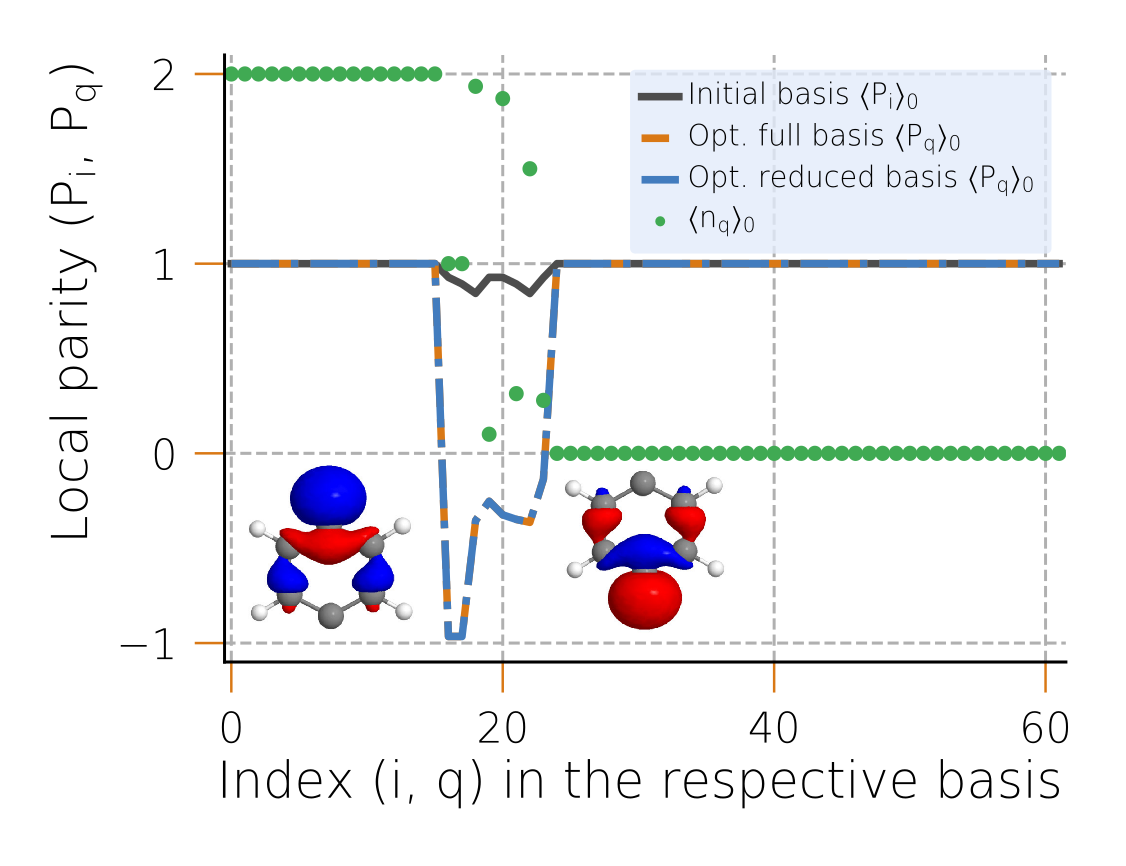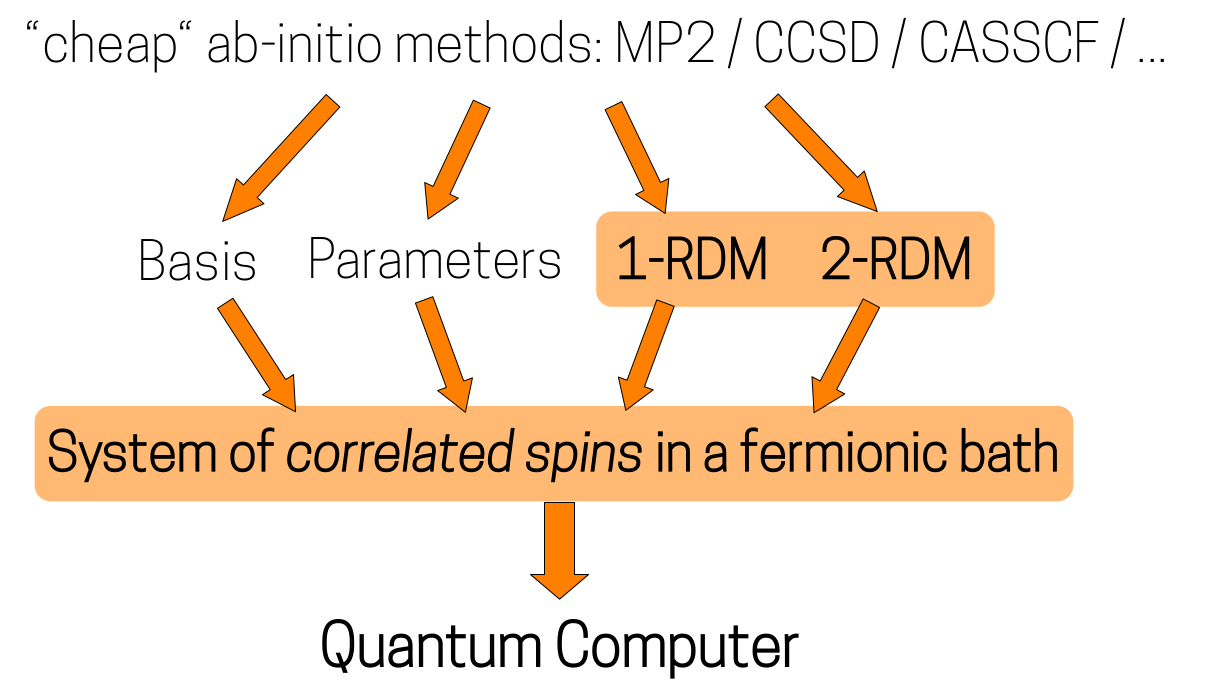Introduction
HQS Spin Mapper facilitates the derivation of effective spin-bath model Hamiltonians for real input materials from first principles.

Using the HQS Spin Mapper one is able to investigate a given input molecule or solid for the relevance of low energy spin physics and to determine the predominant spin degrees of freedom involved. The HQS Spin Mapper further allows for an automatic derivation of a model Hamiltonian describing the relevent spin degrees of freedom and their coupling to a fermionic environment.
Applications
An important use case of the HQS Spin Mapper is the study of materials with dominant spin physics (i.e. magnetism) on a quantum computer. For this purposes the package provides a method to d erive an accurate material-specific effective spin-bath model description from first principles, which can be used in a computation on a quantum device.

The figure above illustrates a procedure that allows for the simulation of real materials with relevant spin physics. The HQS Spin Mapper uses the results of preceeding electronic structure calculations to derive the spin-bath model description of the material that is suitable for simulation on near and intermediate term quantum computers.
-
In the first step, the basis orbitals of spin-like character are identified based on their local parity. This local parity is obtained using the one- and two-particle reduced density matrices (1-RDM and 2-RDM), which can computed using correlated ab-initio methods (e.g. MP2/CCSD/CASSCF/...).
-
In the second step, a mapping of the original Hamiltonian to a spin-bath model is performed by utilizing a generalized Schrieffer-Wolff transformation method.
For a detailed description of the full workflow please refer to the Theoretical background chapter.
Glossary
| CASSCF | Complete Active Space Self-Consistent Field |
| CCSD | Coupled Cluster with Single and Double excitations |
| MP2 | Møller-Plesset (Second Order) |
| 1-RDM | One Electron Reduced Density Matrix |
| 2-RDM | Two Electron Reduced Density Matrix |
Getting started
HQS Spin Mapper is a tool offered on HQStage to provide model analysis. It lets the user convert an electronic description of a system into a spin-based one. This gives the user more options for simulation methods and makes it possible to simulate these systems on quantum computers.
The HQS Spin Mapper module can be installed from HQStage
hqstage install hqs_spin_mapper
For detailed instructions on the installation see Installation.
A selection of applications of the HQS Spin Mapper for simple model systems and molecules are provided as Jupyter notebooks and are avalaible through HQStage
hqstage download-examples
Features
-
Automatic identification of spin degrees of freedom: The package offers two complementary local parity optimization routines. These identify linear combinations of basis orbitals with spin-like (or pseudo-spin-like) character. This information can be used to separate the system into effective spin and fermionic bath degrees of freedom.
-
Translation of Hamiltonian descriptions into fermionic operator representations: Tensor descriptions of the Hamiltonian, e.g. resulting from electronic structure calculations, can be translated into representations using fermionic algebraic operators. This allows for a quick and efficient computation of commutators.
-
Generalized Schrieffer-Wolff transformation method: The package offers a special Schrieffer-Wolff transformation routine that facilitates the transformation of generic fermionic Hamiltonians to effective spin-bath Hamiltonians. The accuracy of the transformed Hamiltonian is indicated by the local parity of the spin-like orbitals. Future extensions will allow for even more generic input systems and target effective Hamiltonians.